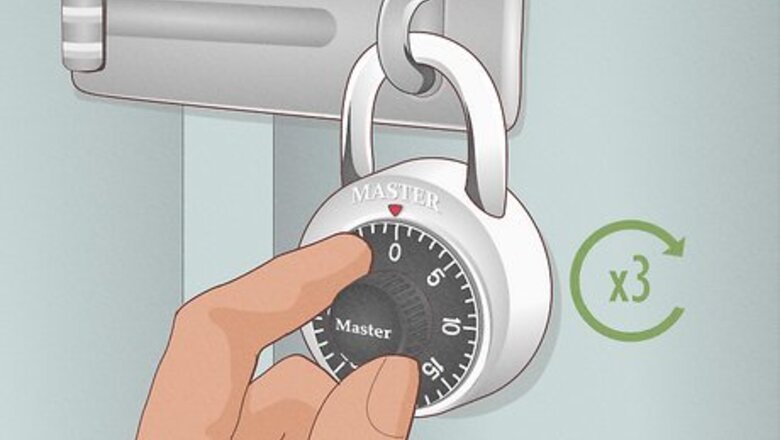
views
- If you don't know the serial number, find the sticking points by twisting the lock to narrow down the combination.
- If you know the serial number, request the combination directly from Master Lock.
- A standard 40-digit Master Lock has 64,000 possible combinations that may open the lock.
Without a Serial Number
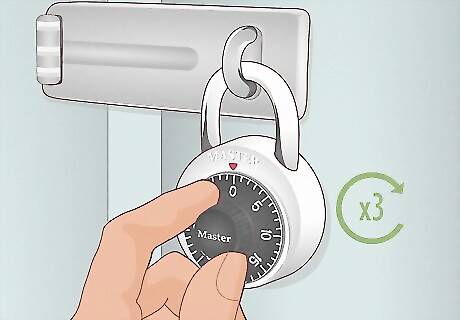
Turn the dial at least 3 rotations clockwise first to clear it. Turn the lock's dial clockwise to 0. This will undo any of your previous attempts so you can start fresh.
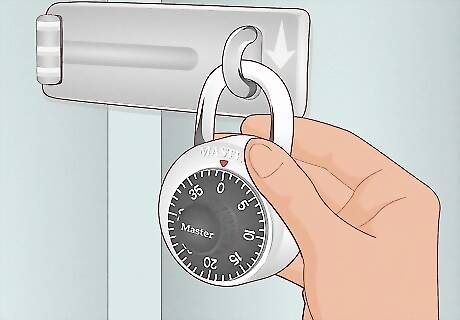
Apply pressure on the shackle, the curved handle at the top of the padlock. Turn the dial clockwise (CW) slowly as you press the shackle. If you can't turn the dial at all from the 0 point, release the shackle and turn the dial CW just a number or 2 and then try it again.

Find the first sticking point. As you turn the dial CW with tension on the shackle, you will come to the first clockwise stopping point where you can't turn the dial anymore. Make note of where it stops. Sometimes, the dial will stick right on the numbers, but sometimes the sticking point will be between the numbers. If so, record the number to the half (example: 22.5). While continuing to apply tension to the shackle, turn the dial as far left (counter-clockwise) as you can. Make note of the first counter-clockwise (CCW) stopping point. The CCW stopping point and CW stopping point from your sticking "range," for example, 22.5 to 10. Some 800XXX and 908XXX locks have a 2-number sticking range (for example, 28 to 30 and 10 to 12). Determine the first sticking point by finding the number that's in the midpoint of the sticking range. A range of 4 and 5 would have a first sticking point of 4.5. A range of 22.5 and 23.5 would have a first sticking point of 23. Each set of numbers that you find will have the same range. For example, one group may be 0.25 to 0.75 and another may be 0.5 to 0.25 on either side of the sticking points.
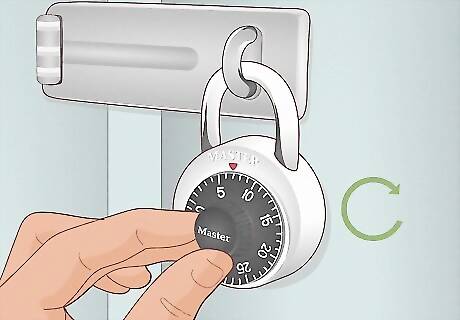
Release the shackle, then turn the dial clockwise slightly past the first sticking point. Turn the dial clockwise about one number higher from the first sticking point in order to allow you to "escape" that sticking point.
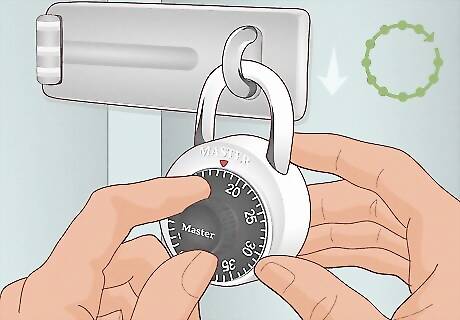
Reapply tension to the shackle and continue turning the dial clockwise. You’ll find 11 more sticking points, for a total of 12 sticking points in 1 complete turn of the dial. Write all 12 sticking points down.
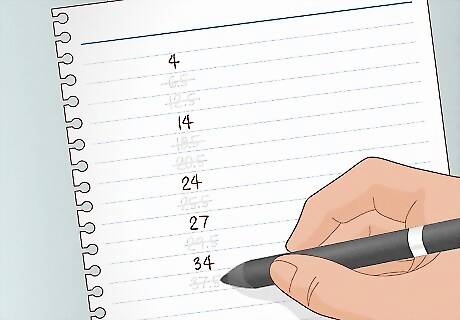
Find the third number of the combination by eliminating possibilities. Look at your list of sticking points and eliminate all those which are not whole numbers (that is, cross off any number that ends in 0.5). Eliminate 7 of the 12 numbers with this step. Of the remaining sticking points, choose the number with the unique digit in the "1s" position. Four of the remaining 5 numbers will share the same number in the "1s" place. For example, if the numbers left on the list are 4, 14, 24, 27, and 34, the number 27 is the only number which does not have a 4 in the "ones" place. This is the third number of the combination. If you only have 4 numbers remaining and they all share the same digit in the "1s" position, check the "note" above in step 3 about a 2-number range. The third number of your combination will be the number that has a 2-number range (for example, if you have 0, 30, 20, 10 left, but 20 has a range of 19 to 21, that would mean that your third combination number is 20).
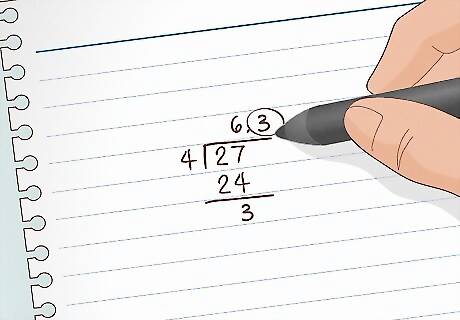
Divide the third number of the combination by 4. Write down the remainder to find the magic number. From our above example, 27/4 = 6, with a remainder of 3. Therefore, 3 is the magic number. Remember that you are only concerned with the remainder, which will always be 0, 1, 2, or 3. If the third number of the combination is less than 4, that is your magic number.

Find the possible first numbers of the combination. Add 4 to the magic number (3). Write down the result (7). Now, add 4 to that and continue adding 4 to each resulting sum until you have gone completely around the dial once. Write down each of these numbers. For the example above, the numbers would be 3, 7, 11, 15, 19, 23, 27, 31, 35, and 39. One of these numbers is the first number of the combination. For some 800XXX locks, this will be the second number of the combination. The next set of numbers will be used as the first.
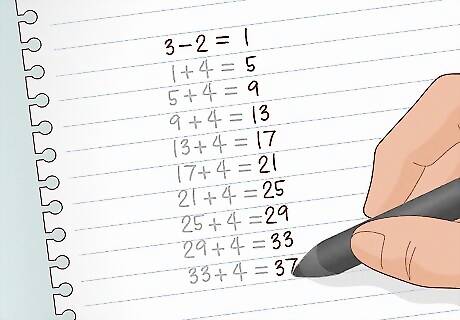
Find the possible second numbers of the combination. If your magic number is 0 or 1, then add 2 to it. Otherwise, subtract 2 from the magic number. Since the example magic number is 3, subtract 2 and get 1. Write down the answer and add 4 to it. Now add 4 to each resulting sum until you have gone completely around the dial once. In the example, the numbers would be 1, 5, 9, 13, 17, 21, 25, 29, 33, and 37. One of these numbers is the second number in the combination.
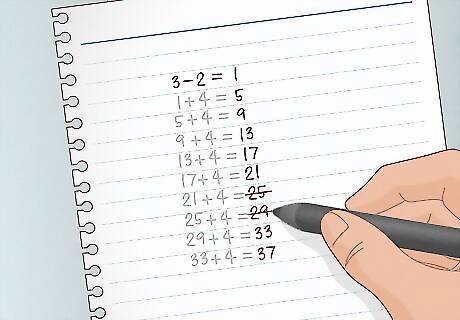
Cross out the numbers plus or minus 2 from the 3rd number of the combination. In this example, since 27 is the third number, cross 25 and 29 off your list of possible second numbers.
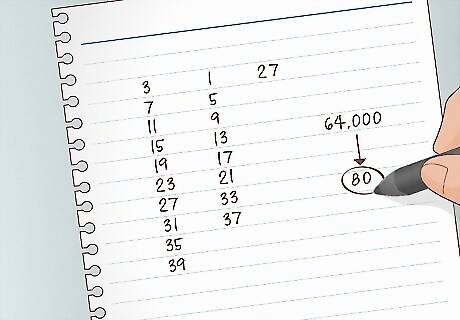
Figure out the correct combination by trial and error. You now know all the possible first numbers (3, 7, 11, 15, 19, 23, 27, 31, 35, 39), all the possible second numbers (1, 5, 9, 13, 17, 21, 33, 37), and the third number (27). You've just narrowed down 64,000 combinations to only 80. Try every possible combination until you find the right one.
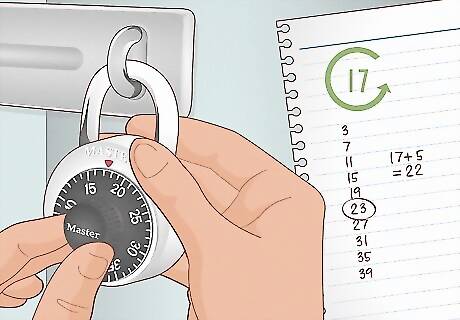
Use the CCW trick to figure out the first number. Turn the dial counter-clockwise (CCW) slowly as you pull the shackle, feeling for a sticking point once per rotation. Look at the number when it sticks and add 5 to that value. Find the number you wrote down for the first digit (in step 9) that is nearest the sum. For example, if the lock sticks at 17 when rotating CCW, you would write down 17+5=22, then look in the list above and determine that 23 is likely the first number of the combination. This trick may not work for 800XXX locks, but it's still a good starting number to try.
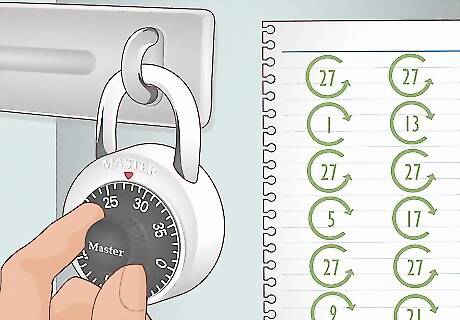
Retry each combination without clearing the lock. You only have to clear the lock when the first or third number exceeds the second for the first time. So we would try 27-1-27, then rotate CW to 5 and CCW to 27, then CW to 9 and CCW to 27, then CW to 13 and CCW to 27, then CW to 17 and CCW to 27, then CW to 21 and CCW to 27. Now that the next number we would try is 33 which is greater than our first digit we would try 27-33-27, then CW to 37 and CCW to 27. The reason this works is the disk for the second digit isn't impacted when we rotate CCW, so we are effectively just setting the 2nd number to a bigger value. When the value gets too big then we effectively passed the first number *twice* and then picked our second digit—which is why we have to reset when the 2nd number becomes bigger than the first.
With a Serial Number
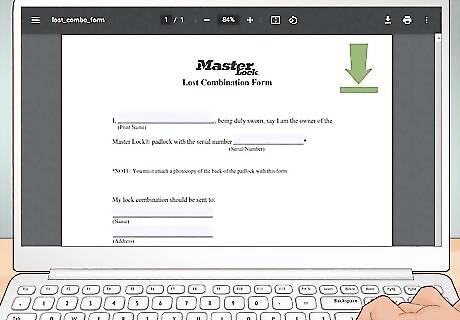
Download a "Lost Combination Form" from Master Lock. Master Lock knows you might forget the combination to your lock at some point, and they’ve got a plan in place. Download the Lost Combination Form, but don’t fill it out just yet.

Take your form to a notary public and ask to have the form notarized. This will prove that you’re the actual owner of the lock. You can usually find a notary at your local bank. Fill out the form in the presence of the notary public. Bring your ID to confirm your identity. Most notaries charge a small fee. Unfortunately, Master Lock will not reimburse you for these charges.
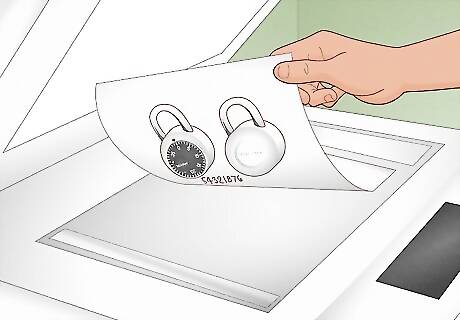
Photocopy your lock's serial number onto a piece of paper. Make sure the photocopy shows that your lock isn't attached to anything. Then, hand write the serial number beneath the picture of the lock.
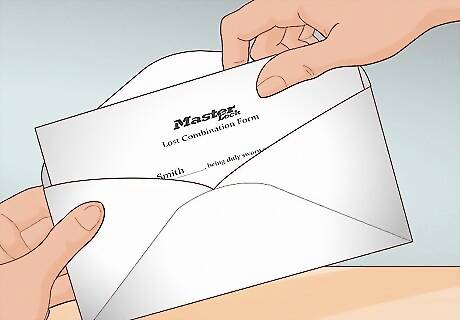
Mail your notarized form and photocopy to Master Lock. Use the address below: Master Lock Warehouse 24 North Free Port Drive Nogales, AZ 85621
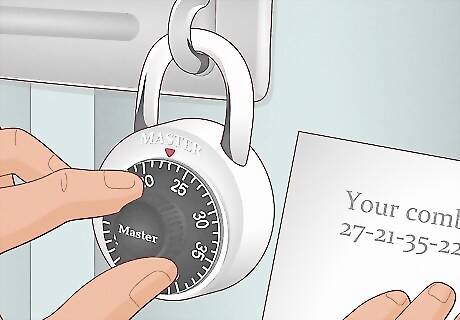
Wait 4 to 6 weeks to get your combo. Master Lock will process your request and send you your combination. Test the combination out on your lock to make sure that it works.
















Comments
0 comment